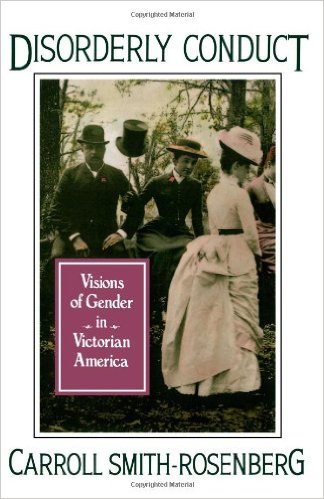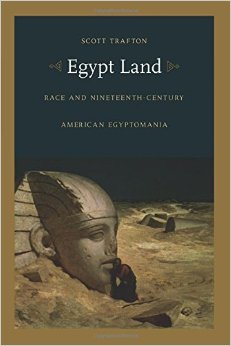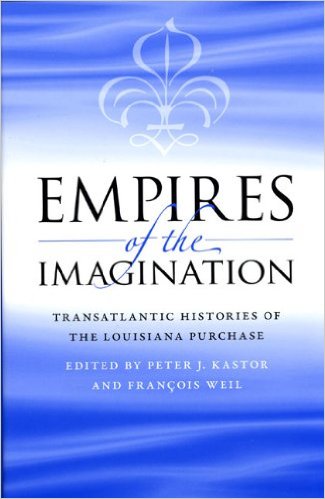This section will be a three parter, so here is the middle child. I have been reading about the antebellum period for over 2 months straight now, only to have the present completely reassemble itself over the same template.

I might as well start with the best book to read before any election, but it seemed exceptionally prescient when I finished it last weekend. Karen Halttunen’s Confidence Men and Painted Women: A Study of Middle-Class Culture in America 1850-1870 captures the nation as it literally and figuratively moves from rural to urban. The main focus of her book is the untying of “Victorian Hypocrisy” and how the structure of sincerity and propriety lead to the development of middle class culture. Confidence Men and Painted Women (not always prostitutes) were those who we only acting sincere within the newly formed manners and customs that were to be the defining separating features between middle and working class. In case money wasn’t enough. In case you think this is a niche outlier of antebellum culture, the fact that there were handbooks for sincerity were printed into the double digit editions from a wide range of publishers throughout the period.
For me the greatest explanation Halttunen offers is the difference between Romanticism and Sentimentalism. I think, for me, I have settled into an odd sort of Romantic Nihilism in life where everything is beautiful and nothing matters. It was hard to explain before seeing Hallttunen’s comparison here. Romanticism is coming to terms with reality and the world as it is and choosing to embrace mythology instead (or in spite) of that reality. Sentimentalism on the other had embraces the myth but refuses (or is incapable) of embracing or coming to terms with reality. This sets up the rest of Halttunen’s book looking at those “rubes” who come into the city from their farms for a new life only to lose most of their money and more of their dignity at the hands of confidence men. They are the pinnacle of that victorian hypocrisy that the book is concerned with. If it seems like a foreign idea, you’ve met confidence men before: the wolf and the cat from Pinocchio and the whole idea of that Pleasure Island (utopia).

Carrol Smith-Rosenberg picks the gender portion of the Victorian hypocrisy (without calling it that) in Disorderly Conduct: Visions of Gender in Victorian America. The work is a collection of essays that span Smith-Rosenberg’s career to the point of publication. The book looks at the many antebellum instabilities, socioeconomic and cultural, and the psychological anxieties about their respected positions in all were expressed (or at least revealed) within language. Women used language to protect themselves from the growing repression that trended along with the revolutions with commerce, industry, and transportation that disrupted and confused the dominant male constructed ideologies regarding their attempts to legitimize their old power structure within the new emerging class/industry organizations. The threatening (or the perception of threatening) of their existing family structure from the unfamiliar led to attempted control of sexual behavior. The book goes well into the 20th century as well but any scholar of women’s studies (especially in an American context) would do well to add this collection of essays to their collection.

The “race” leg of this stool comes in the form of Scott Trafton’s Egypt-Land: Race and Nineteenth-Century American Egyptomania. The fun thing about this book is that it looks at a history of science topic (Egyptomania–archaeology, etc) from a hard literary perspective. The early emergence of archaeology and ethnology was a way to scientize what was already a cultural phenomena of racial hierarchy. For Trafton, “the scientific construction of race begins with the question of Ancient Egypt and vice versa” (49). The book is “irreducibly interdisciplinary” and will serve nearly anyone who picks it up. For me and the ties through the antebellum period and the earlier literature studies is the analysis of Poe’s short story “Some Words with a Mummy.” Trafton’s analysis looks at it as general satire on the situation of “melodramatic” spectacle (tomb openings and unwrapping).
One of the things missed however is the very real spectacle that the story was based on. More generally the story could be any one of instances, but, leading up to the publication an unwrapping party was advertised with growing excitement. The advertisements grew until the mummy was billed as a princess. Only to be revealed at the unwrapping as more than a woman. If royal, which it wasn’t, it would have to have been a prince. This was the last straw for Poe’s patience with Egyptomania before penning “Some Words.”

Going back to the beginning of the 19th century the edited volume Empires of the Imagination: Transatlantic Histories of the Louisiana Purchase takes a long (time and distance) look at one of the hallmark stories of American history, and deconstructs why it is such a hallmark. The whole idea of the Purchase (according to Richard White and others) is that is was more of a claim than a place. The fact that it only appears as a Purchase in the US reveals the relationship that the French government had with the holdings. Some of the contributors point out that the area, which is still quite diverse in culture, was more influenced by the Spanish when they held the real estate than it was from the French who eventually sold it to the young republic.

The largest over-arching theme within the essays is that the ultimate deal to sale was not due to the American diplomatic maneuvering on the world stage, but was rather choices made in the European governments. If that is the case, and it is certainly argued well in this volume, then that might explain why the Lewis and Clark Expedition has eclipsed the actual purchase even in the last century.

In the end, industry and Puritan Work ethic became (and in some places still are) the modern hallmarks of Americanism, that is, according to Andrew Lyndon Knighton, productivity. The entire notion of his book Idle Threats: Men and the Limits of Productivity in Nineteenth-Century America is that the lines determining what was productive and what was unproductive was not only blurry, but constantly shifting. Early on Knighton posits that the idea of un-productivity was a terrible characteristic of the working class, it was exactly what it meant to be part of the leisure class. It was, at once, a sign of laziness and productivity, poorness and wealth. This can be best understood going back to that idea of Victorian Hypocrisy in Confidence Men and Painted Women. Thank God it does too, because Idle Threats is one of the most impossible books I have ever tried to read. The book is filled with examples of the instances I described above, but instead of being written in a manner that would actually help in explaining the contradictions, they are lost in a series of jargon laden vocabulary tests. I am sure it is a quite useful book for those who can manage to break through the surface, but as it stands as part of a series America in the Long 19th Century by New York University Press, it was written for six people and I most certainly wasn’t number seven.

